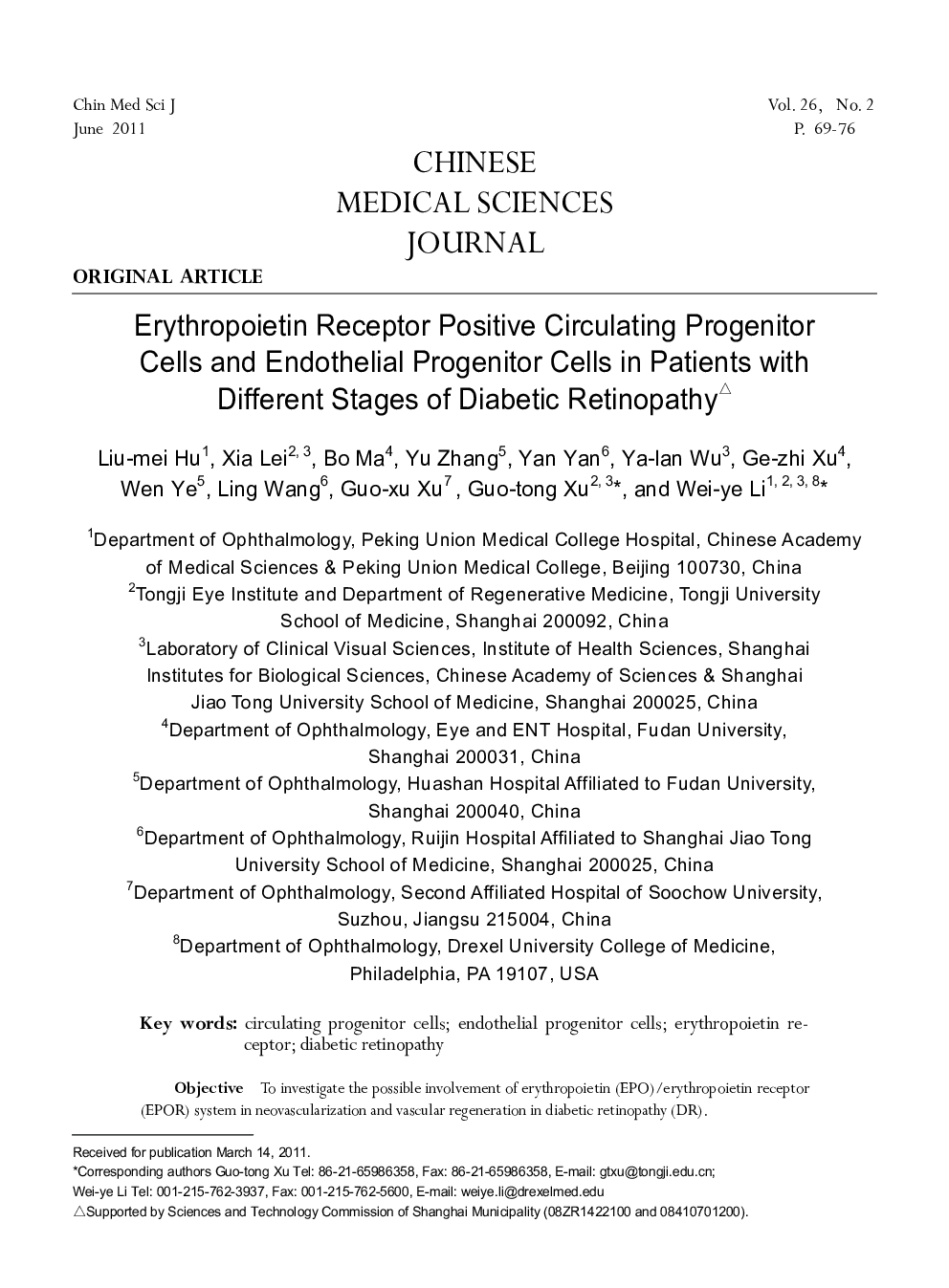| Article ID | Journal | Published Year | Pages | File Type |
|---|---|---|---|---|
| 3459510 | Chinese Medical Sciences Journal | 2011 | 8 Pages |
ObjectiveTo investigate the possible involvement of erythropoietin (EPO)/erythropoietin receptor (EPOR) system in neovascularization and vascular regeneration in diabetic retinopathy (DR).MethodsEPOR positive circulating progenitor cells (CPCs: CD34+) and endothelial progenitor cells (EPCs: CD34+KDR+) were assessed by flow cytometry in type 2 diabetic patients with different stages of DR. The cohort consisted of age- and sex-matched control patients without diabetes (n=7), non-proliferative DR (NPDR, n=7), proliferative DR (PDR, n=8), and PDR complicated with diabetic nephropathy (PDR-DN, n=7).ResultsThe numbers of EPOR+ CPCs and EPOR+ EPCs were reduced remarkably in NPDR compared with the control group (both P<0.01), whereas rebounded in PDR and PDR-DN groups in varying degrees. Similar changes were observed in respect of the proportion of EPOR+ CPCs in CPCs (NPDR vs. control, P<0.01) and that of EPOR+ EPCs in EPCs (NPDR vs. control, P<0.05).ConclusionExogenous EPO, mediated via the EPO/EPOR system of EPCs, may alleviate the impaired vascular regeneration in NPDR, whereas it might aggravate retinal neovascularization in PDR due to a rebound of EPOR+ EPCs associated with ischemia.
